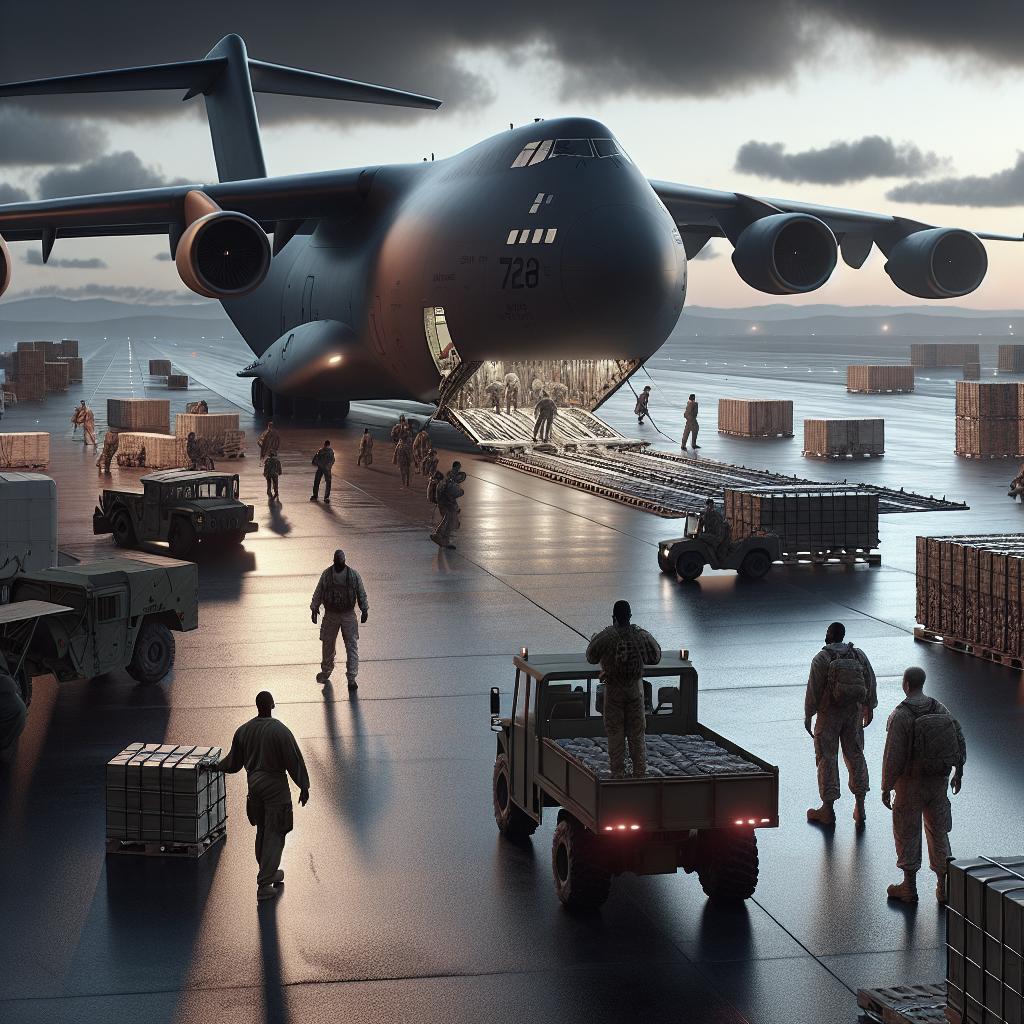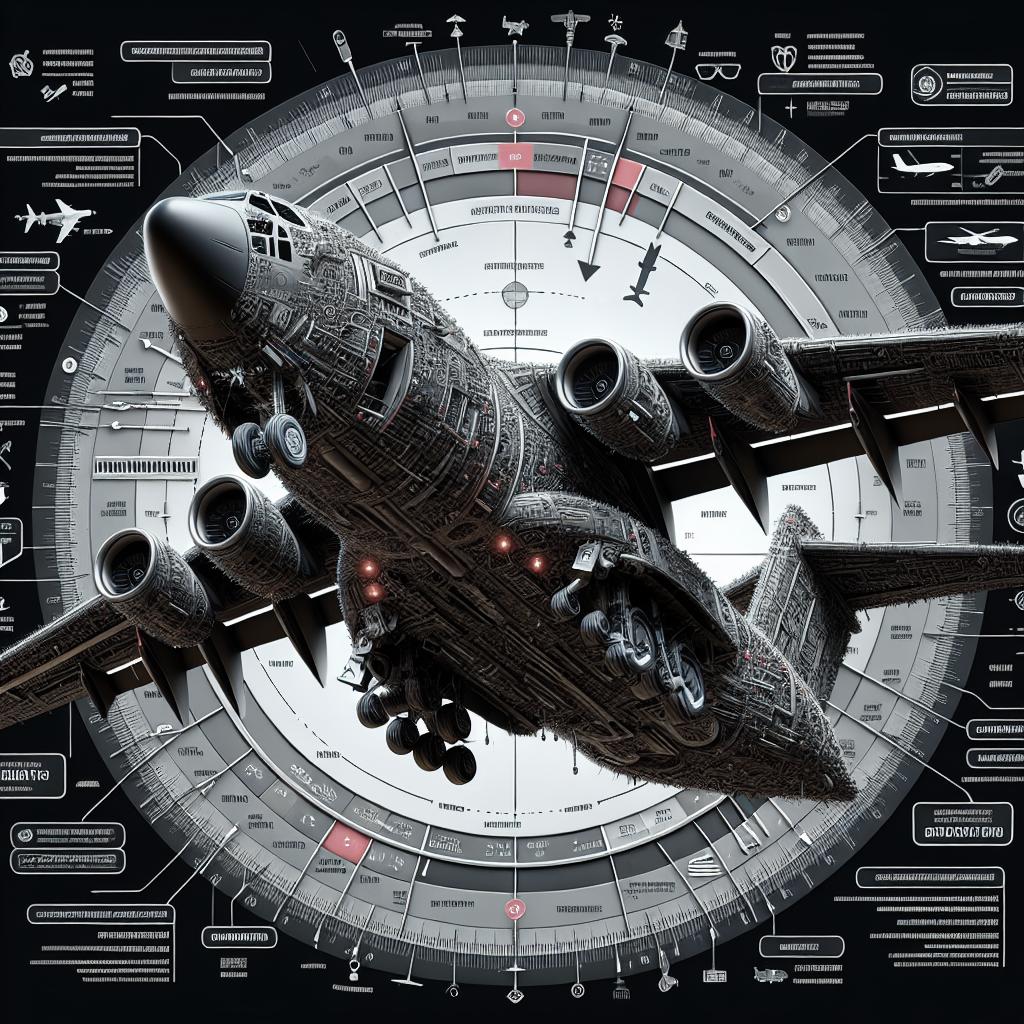Military transport aircraft play a critical role in modern defense strategies, providing the necessary mobility and logistical support required for various operations. From advanced designs such as the blended wing body and ground effect aircraft to cutting-edge VTOL and unmanned options, these platforms are continually evolving. This article delves into the various missions these aircraft undertake, examining the latest developments in their design and propulsion systems, as well as the promising technologies that could redefine military transport in the near future. Read on to explore the fascinating world of military transport aircraft and their pivotal roles in modern defense.
Blended wing body design
Blended wing body (BWB) designs represent a significant departure from traditional aircraft structures, which typically feature a cylindrical fuselage and distinct wings. In a BWB configuration, the wings and body merge seamlessly, creating a unified structure that reduces aerodynamic drag and increases fuel efficiency. This design affords military transport aircraft with enhanced payload capacity, greater range, and improved stealth characteristics.
The advantages of BWB designs extend beyond aerodynamic efficiency. The increased internal volume of the aircraft can be utilized for larger cargo holds, additional fuel storage, or advanced sensor and avionics equipment. This makes BWB aircraft incredibly versatile, capable of fulfilling roles ranging from cargo transport to airborne early warning and control (AEW&C) missions. With ongoing research and development, BWB designs are set to play an integral role in the next generation of military transport aircraft.
Ground effect aircraft
Ground effect aircraft, also known as ekranoplanes, capitalize on the aerodynamic phenomenon known as ground effect, which occurs when flying at very low altitudes. By cruising close to the surface, these aircraft experience increased lift and reduced drag, leading to enhanced fuel efficiency and speed. While traditionally considered for maritime applications, ground effect aircraft are gaining attention for their potential in military transport.
The low-altitude operation of ground effect aircraft offers several tactical advantages in military scenarios. These aircraft can evade radar detection more easily, making them ideal for covert operations or rapid troop deployments. Additionally, their ability to land on water or rugged terrain expands their operational flexibility, allowing forces to reach otherwise inaccessible areas. As research continues, ground effect aircraft may become integral to future military transport strategies.
VTOL transport aircraft
Vertical take-off and landing (VTOL) transport aircraft can operate without the need for conventional runways, providing exceptional flexibility in deployment. These aircraft are particularly valuable in scenarios requiring rapid response and access to remote or austere environments. From urban operations to disaster relief, VTOL capabilities significantly enhance the operational readiness and strategic reach of military forces.
eVTOL and HSVTOL: Making progress
The advent of electric VTOL (eVTOL) and hybrid-electric VTOL (HSVTOL) aircraft marks a pivotal innovation in aviation technology. These platforms promise reduced acoustic signatures, lower operational costs, and sustainable energy solutions. Military forces are increasingly investing in eVTOL and HSVTOL capabilities to leverage their environmental and tactical benefits.
Progress in this domain is rapid, with several prototypes and test models already demonstrating the potential of these technologies. Companies like Bell, Boeing, and Lockheed Martin are at the forefront, developing models that promise unprecedented agility, speed, and range. As these technologies mature, eVTOL and HSVTOL aircraft are likely to become staples in military transport arsenals worldwide.
Unmanned/optionally manned
Unmanned and optionally manned aircraft are revolutionizing military transport by offering enhanced operational flexibility, reduced risk to personnel, and the ability to perform missions that manned aircraft might not undertake. These aircraft can be remotely piloted or operate autonomously, adapting to changing mission requirements with ease.
Special operations forces armament requirements
Unmanned and optionally manned aircraft equipped for special operations forces (SOF) deliver precision-targeting, reconnaissance, and logistical support in high-risk environments. The ability to carry advanced armaments while remaining agile and covert gives SOF units a critical edge in executing complex missions effectively.
Anduril unveils Roadrunner & Roadrunner-M twin-jet-powered VTOL UAVs
Anduril Industries recently unveiled its Roadrunner and Roadrunner-M twin-jet-powered VTOL UAVs, designed to meet a range of tactical and logistical requirements. These UAVs boast advanced propulsion systems, superior payload capacities, and the versatility to operate in diverse environments, making them ideal for modern military operations.
German Order Will See Rheinmetall LUNA NG UASs Heading to Ukraine
In response to growing geopolitical tensions, the German government has ordered Rheinmetall’s LUNA NG UASs for deployment in Ukraine. These unmanned aerial systems (UAS) provide critical surveillance, reconnaissance, and communication capabilities, bolstering Ukraine’s defensive posture and situational awareness.
UAV Programmes: a Focus on the EU
The European Union is investing heavily in UAV programs to enhance its collective security and defense capabilities. Initiatives like the European Defence Fund (EDF) aim to develop cutting-edge UAV technologies, ensuring member states have access to the latest advancements in unmanned systems for various military applications.
Camcopter S-100 Conducting Emission Monitoring and Maritime Surveillance for France’s EMSA
The Camcopter S-100 is actively conducting emission monitoring and maritime surveillance for France’s European Maritime Safety Agency (EMSA). This versatile UAV is instrumental in environmental protection missions and enhancing maritime security, proving invaluable in both civilian and military contexts.
LIMA 2023: Malaysian MoD Orders Two ATR 72 MPAs From Leonardo
For effective maritime patrol and surveillance, the Malaysian Ministry of Defence (MoD) has ordered two ATR 72 Maritime Patrol Aircraft (MPAs) from Leonardo at the Langkawi International Maritime and Aerospace Exhibition (LIMA) 2023. These aircraft will bolster Malaysia’s maritime security and operational capabilities.
RAF-sponsored Jackal VTOL UAV Fires LMMs
The Royal Air Force (RAF) has sponsored the development of the Jackal VTOL UAV, which has successfully fired Lightweight Multirole Missiles (LMMs) in recent tests. This advancement demonstrates the growing utility of VTOL UAVs in precision strike roles, enhancing the RAF’s capabilities for diverse missions.
Alternate/renewable energy propulsion systems
The military aviation sector is increasingly exploring alternate and renewable energy propulsion systems to reduce operational costs, enhance sustainability, and minimize the logistical burden of fuel supply chains. These propulsion systems include hydrogen fuel cells, biofuels, and hybrid-electric powertrains.
Emerging technologies in alternate energy are opening new possibilities. For instance, hydrogen-powered aircraft offer zero-emissions performance while maintaining high efficiency and range. Similarly, biofuels derived from algae or other renewable sources can replace conventional jet fuels without requiring significant changes to existing aircraft designs. The integration of these propulsion systems not only aligns with global sustainability goals but also ensures military forces maintain operational effectiveness in an era of evolving energy landscapes.
Suborbital transport
Suborbital transport represents a futuristic approach to rapid troop deployment and logistical support. By leveraging the capabilities of suborbital spaceflight, military forces can achieve transcontinental travel in a matter of minutes, dramatically reducing response times in critical situations.
The potential applications of suborbital transport extend beyond rapid troop movements. This technology can also facilitate the rapid deployment of supplies, equipment, and humanitarian aid to disaster-stricken regions. Companies like SpaceX and Blue Origin are pioneering advancements in suborbital flight, bringing the promise of ultra-fast, global transport closer to reality. As these technologies become operational, they could revolutionize the strategic mobility of military forces worldwide.
Most likely to succeed
Among the various advancements in military transport aircraft, certain innovations stand out for their potential to transform future operations significantly. One such innovation is the Northrop Grumman’s team for the US Navy’s E-XX TACAMO requirement, which aims to develop a highly resilient and capable aircraft for communication relay and command and control missions.
Northrop Grumman Announces Team for USN’s E-XX TACAMO Requirement
Northrop Grumman has announced its team for the US Navy’s E-XX TACAMO (Take Charge And Move Out) requirement. This program focuses on developing an advanced airborne communications relay platform that ensures secure and reliable communication between national command authorities and strategic forces. The E-XX TACAMO aircraft will play a crucial role in maintaining strategic deterrence and operational readiness in the face of evolving threats.
Service for subscribers
The continual improvement and diversification of military transport aircraft highlight the importance of staying informed on the latest developments and trends. For defense industry professionals, military personnel, and enthusiasts, subscribing to specialized publications and services can provide valuable insights and keep them up-to-date with emerging technologies and strategic advancements. These resources offer detailed analyses, expert commentary, and exclusive content that support informed decision-making and strategic planning.
Summary Table
| Category | Details |
|---|---|
| Blended Wing Body Design | Unified structure for reduced drag, increased fuel efficiency, enhanced payload capacity, greater range, and improved stealth. |
| Ground Effect Aircraft | Utilizes ground effect for increased lift, reduced drag, ideal for covert operations and rapid troop deployments. |
| VTOL Transport Aircraft | Offers vertical take-off and landing for flexible deployment, particularly valuable in rapid response and remote access scenarios. |
| eVTOL & HSVTOL | Electric and hybrid-electric VTOL aircraft offer reduced acoustic signatures, lower costs, and sustainable energy solutions. |
| Unmanned/Optionally Manned Aircraft | Enhances flexibility, reduces risk, and supports complex missions; significant recent developments include Anduril’s Roadrunner UAVs. |
| Alternate/Renewable Energy Propulsion Systems | Hydrogen fuel cells, biofuels, and hybrid-electric power for sustainability and operational effectiveness. |
| Suborbital Transport | Ultra-fast transcontinental travel for rapid troop deployment and logistical support. |
| Most Likely to Succeed | Innovations such as Northrop Grumman’s E-XX TACAMO for advanced communication relay and command and control. |


